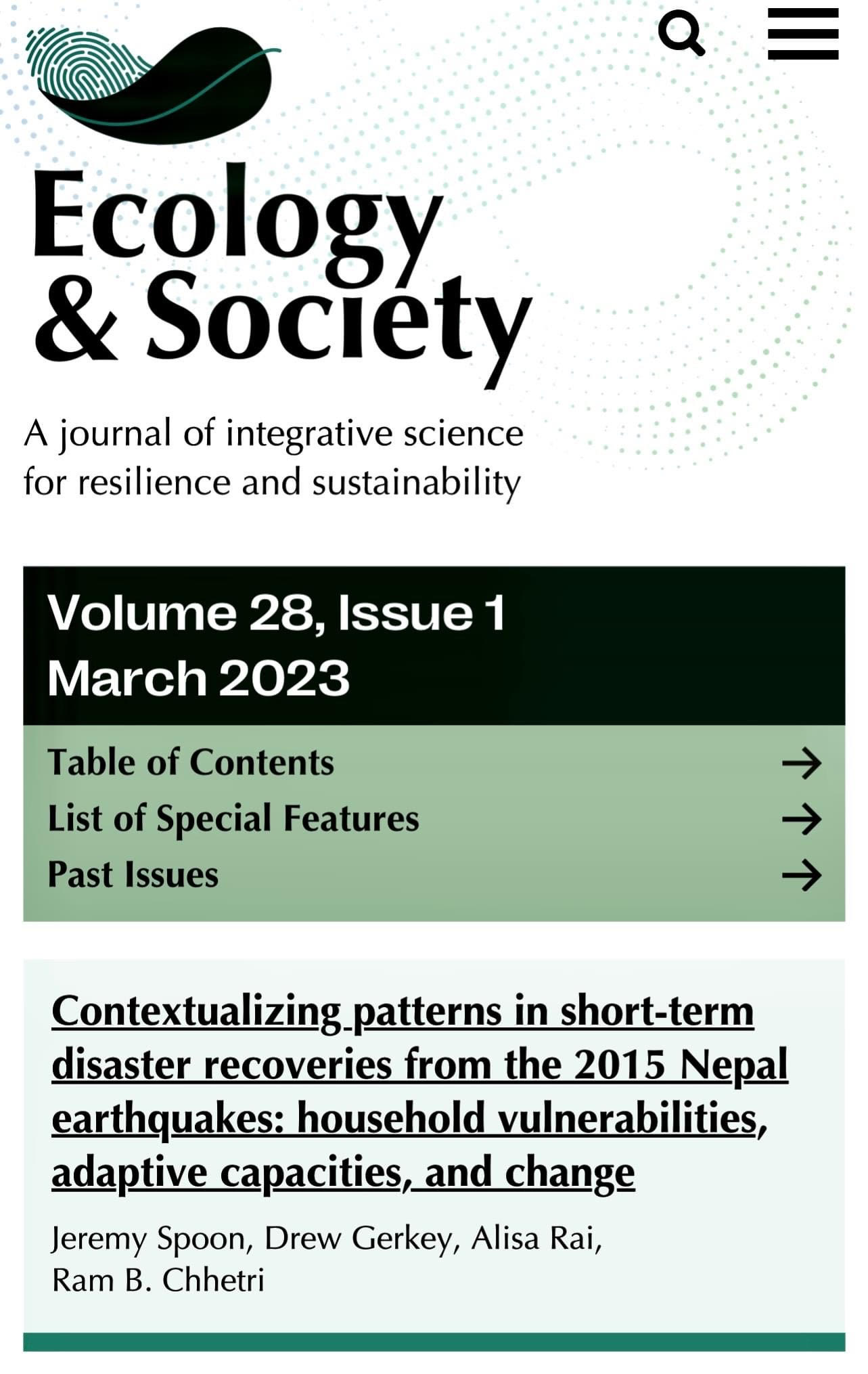It is my pleasure to share that our fourth and final publication from the Nepal Critical Transitions Project, phases 1 and 2, was just published in the open access journal Ecology and Society:
“Contextualizing patterns in short-term disaster recoveries from the 2015 Nepal earthquakes: household vulnerabilities, adaptive capacities, and change.” Vol 28, Issue 1, Article 40.
It was our goal to tell the stories of our research on short-term rural disaster recoveries to different audiences so that we would have the most impact. We decided to speak to the following communities of thinkers and practice: environmental social science (Ecology and Society), development/aid (World Development), interdisciplinary disaster studies (International Journal of Disaster Risk Reduction), and policymakers, planners, engineers, architects, public administrators, and emergency managers (Progress in Disaster Science). All of our articles are open access. We are proud that the Progress in Disaster Science article was part of a special issue on the 2015 earthquakes sponsored by the Nepal Reconstruction Authority.
We recently finished collecting information for phase 3 of the project and are in the process of data management and analysis.
Our work will compare the results, interpretations, and recommendations from phases 1 and 2 (9 months and 1.5 years after the earthquakes) to phase 3 (7-7.5 years). As we did at 2.5 years, we will also return the new results to the participants and local government representatives for validation and interpretation.
This work would not be possible without the generous support of the National Science Foundation.
Our research team is amazing. There are so many people to thank. See the Acknowledgments section in each article.
Our scholarship benefits greatly from the thinking and insights of the Anthropology of Disaster community.
Thanks and gratitude to the participating communities and their local government representatives, the Central Department of Anthropology at Tribhuvan University, and many more friends and collaborators. It is a privilege to be part of this work.
Abstract
Disaster recovery is multidimensional and requires theoretical and methodological approaches from the interdisciplinary social sciences to illustrate short- and long-term recovery dynamics that can guide more informed and equitable policy and interventions. The 2015 Nepal earthquakes have had catastrophic impacts on historically marginalized ethnic groups and Indigenous households in rural locations, arising in the immediate aftermath and unfolding for years afterward. Analyzing factors that shape household recovery patterns can help identify vulnerabilities and adaptive capacities in addition to signaling potential future changes. We pursue this goal using survey data from 400 randomly selected households in 4 communities over 2 10-week intervals at 9 months and 1.5 years after the earthquakes. Building on previous research that used non-metric multidimensional scaling ordination to identify patterns among multiple indicators of recovery (Spoon et al. 2020a), we investigate associations among these patterns of recovery, hazard exposure, and four domains of household adaptive capacity: institutional participation, livelihood diversity, connectivity, and social memory. Our results suggest: (1) social inequality, high hazard exposure, and disrupted place-based livelihoods (especially for herders, farmers, and forest harvesters on the geographic margins) had strong associations with negative recovery outcomes and displacement; (2) inaccessibility and marginality appeared to stimulate ingenuity despite challenging circumstances through mutual aid and local knowledge; (3) recoveries were non-linear, differing for households displaced from their primary home and agropastoral practice and those displaced to camps; and (4) some households experienced rapid changes while others stagnated. We contribute a temporal dataset with a random sample collected following a disaster that uses a theoretically informed quantitative methodology to explore linear and non-linear relationships among multidimensional recovery, adaptive capacity and change and provide an example of how vulnerabilities interact with adaptive capacity.

Leave a Reply